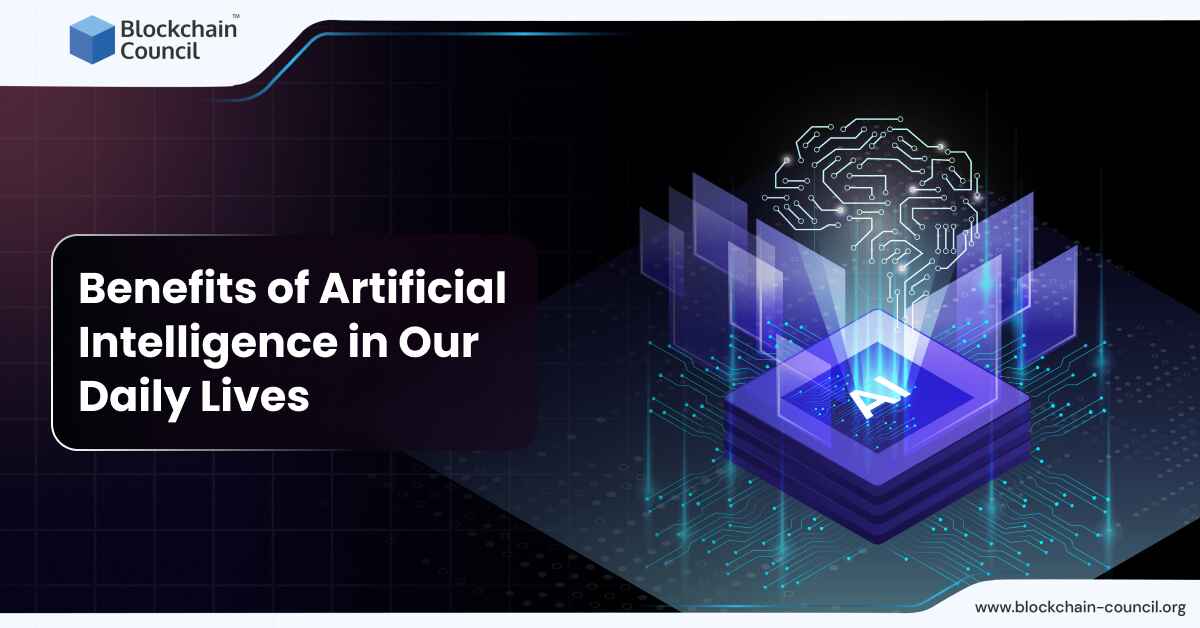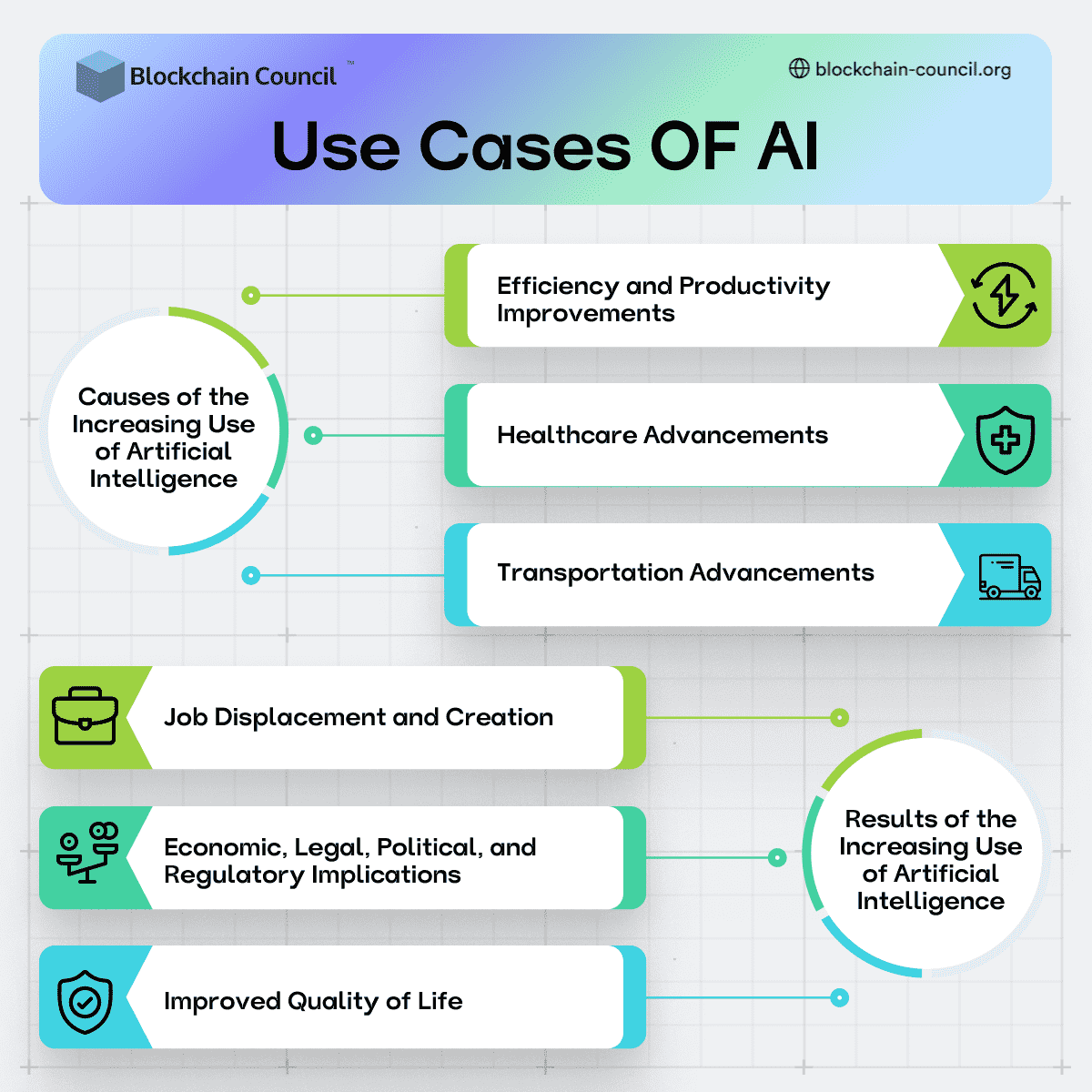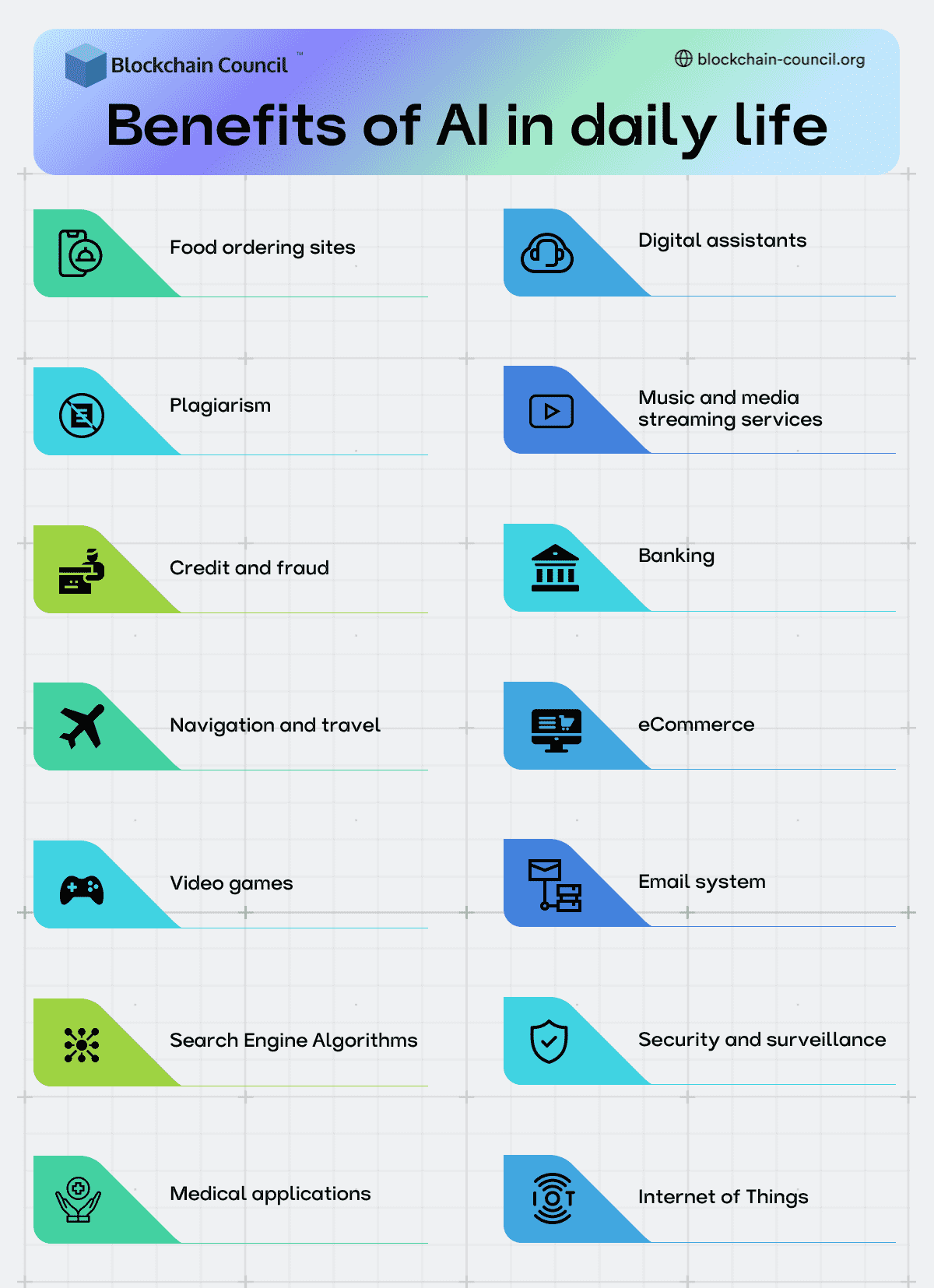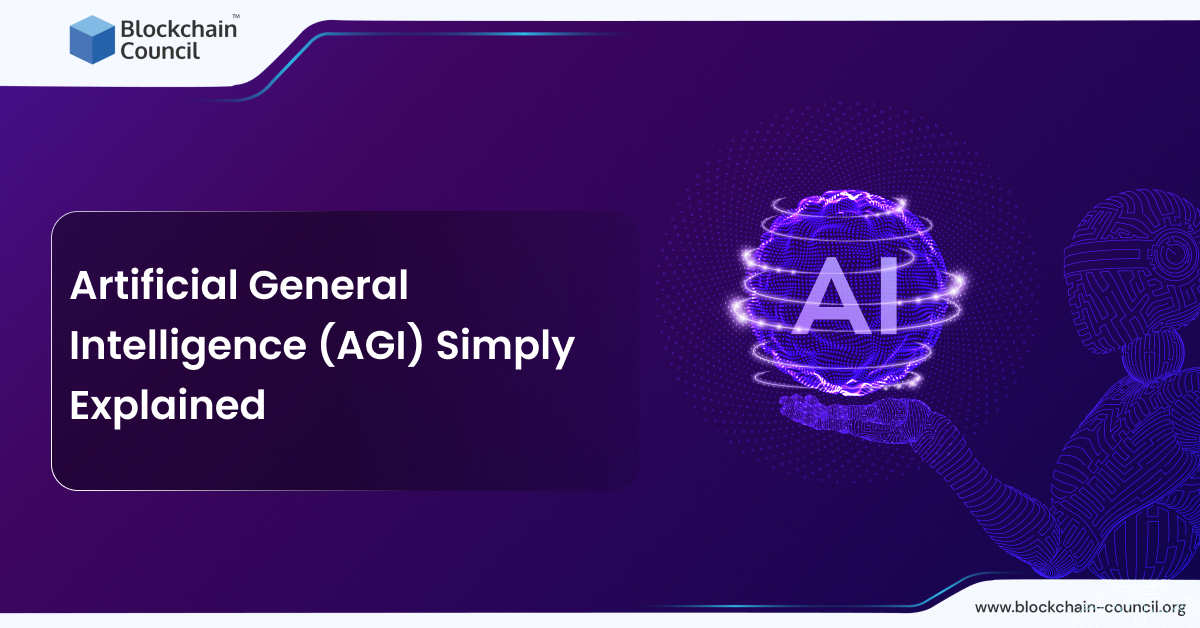
- Amber Smith
- August 27, 2024
Advantages of Artificial Intelligence
- Efficiency and Speed: AI can process and analyze data much faster than humans, making it ideal for tasks that require speed and accuracy, such as data entry, calculations, and complex problem-solving.
- Automation: AI enables the automation of routine tasks across various industries, from manufacturing to customer service, reducing the need for human labor and increasing productivity.
- Enhanced Decision-Making: AI systems can assist in making informed decisions by providing insights derived from large datasets that humans might not be able to analyze as quickly or accurately.
- Innovation: AI drives innovation in numerous fields, such as healthcare, where it aids in disease diagnosis and personalized medicine, and in autonomous vehicles, which could reduce accidents and improve traffic management.
Cons of AI (Disadvantages of AI):
- Job Displacement: AI can automate tasks traditionally performed by humans, leading to job displacement and increased unemployment in certain sectors.
- Bias and Inequality: AI systems can perpetuate and even amplify existing biases if they are trained on biased data, leading to unfair outcomes in areas like hiring and law enforcement.
- High Costs: Developing and implementing AI technology can be expensive, requiring significant resources for data, computing power, and expertise.
- Security Risks: AI systems are susceptible to hacking and other forms of cyber attack, which can lead to privacy breaches and other security issues. Additionally, the use of AI in military applications poses ethical and safety concerns.
Domains in Artificial Intelligence
AI encompasses several domains, including machine learning, natural language processing, computer vision, and robotics. Machine learning algorithms enable machines to learn from data and improve their performance over time. Natural language processing allows machines to interpret and understand human language. Computer vision enables machines to analyze visual information from images and videos. At the same time, robotics allows machines to interact with the physical world.
Also Read: Deep Learning vs Machine Learning vs Artificial Intelligence
Why is AI Important? (Benefits of AI)
AI’s integration into modern society is profound and multifaceted, touching on nearly every aspect of daily life and industry sectors. From enhancing efficiency and decision-making in businesses to personalizing user experiences across digital platforms, AI’s role is indispensable. It drives economic transformation, propelling industries towards automation and innovation, which, while raising concerns about job displacement, also opens up opportunities for new types of employment and creative endeavors. In healthcare, AI’s impact is transformative, enabling more accurate diagnoses and personalized treatment plans, thus improving patient outcomes significantly.
Personalization and user experience stand out as areas where AI adds significant value, tailoring interactions and services to individual preferences. This capability enhances satisfaction and raises important discussions around privacy and the ethical use of data. Moreover, AI’s potential in education is immense, offering personalized learning experiences that could revolutionize the sector by adapting teaching methods and materials to the needs of each student, thus enhancing learning outcomes.
Challenges of Artificial Intelligence
AI also presents significant ethical, social, and economic challenges. There are doubts about the impact of AI on employment, privacy, and security, as well as the possibility of AI being used for malicious purposes or perpetuating existing biases and discrimination.
Also Read: Top 10 Machine Learning Projects
Use Cases OF AI
Artificial intelligence (AI) has become increasingly prevalent in our daily lives, transforming the way we work, live, and interact with each other. The use of AI is expected to continue growing, which will bring both challenges and opportunities.
Causes of the Increasing Use of Artificial Intelligence
Efficiency and Productivity Improvements
AI can automate repetitive and non-futile tasks, improving efficiency and productivity in various industries. This can free up human workers to focus on more complex and creative tasks that require human skills such as critical thinking, empathy, and problem-solving.
Healthcare Advancements
AI is transforming the healthcare industry by improving diagnostic and monitoring capabilities, enabling personalized treatment plans, and giving healthcare providers better access to patient data. This can result in improved patient outcomes, reduced costs, and better resource allocation.
Transportation Advancements
The introduction of autonomous transportation can improve traffic congestion and productivity. With the ability to automate driving, AI can potentially reduce the number of accidents caused by human error, leading to improved road safety.
Results of the Increasing Use of Artificial Intelligence
Job Displacement and Creation
While the increased use of AI may displace certain jobs, it can also create new job opportunities requiring critical thinking, creativity, and empathy. According to PwC, the UK will see a net gain of 200,000 jobs due to AI by 2037.
Economic, Legal, Political, and Regulatory Implications
The transformative impact of AI on our society will have far-reaching economic, legal, political, and regulatory implications that we need to discuss and prepare for. The challenges of determining fault in accidents involving autonomous vehicles and managing a global autonomous arms race are just a few examples.
Improved Quality of Life
The introduction of AI can improve the quality of life by reducing stress levels from daily commutes and improving healthcare outcomes. AI can potentially save lives by providing faster and more accurate diagnoses, enabling personalized treatment plans, and improving access to healthcare services.
Also Read: Top 10 Applications Of Machine Learning
AI in daily use
There are two main categories for using AI in everyday life: software/methodology and embodied AI.
Software/Methodology
Software or methodology AI is the most common form of AI used in everyday life. This type of AI is based on developing algorithms and software that can analyze data, recognize patterns, and make decisions based on that data. Examples of AI software used daily include voice assistants like Siri and Alexa, image recognition for face unlock in mobile phones and machine learning-based financial fraud detection.
Software or methodology AI means downloading software with AI capabilities from an online store and requires no peripheral devices making it accessible to anyone with an internet connection and a device capable of running the software.
Embodied AI
On the other hand, Embodied AI involves integrating AI technology into physical devices. This includes drones, self-driving vehicles, assembly-line robots, and the Internet of Things (IoT). Embodied AI involves designing specific devices based on AI capabilities, with sensors and actuators that allow them to interact with the physical world.
For example, self-driving cars use a combination of computer vision, machine learning, and other AI technologies to navigate roads, detect obstacles, and make decisions based on that information. Similarly, drones use AI to fly autonomously, avoid obstacles, and capture images and video. Assembly-line robots use AI to perform complex tasks. At the same time, the IoT utilizes AI to connect and control devices in homes and businesses. This type of AI is more complex and expensive to develop than software/methodology AI. Still, it can potentially revolutionize many industries and aspects of daily life. Integrating this technology into physical devices can improve efficiency, reduce costs, and increase safety, among other benefits.
Suppose you want to learn about this in detail. In that case, you might want to look into our course on artificial intelligence, where we talk about all these concepts in detail and help you understand their application to improve your knowledge of the subject. Blockchain Council is one of the leading certification hubs, and learning for us can also help you to increase your job perspective in AI development.
How is AI improving Social Media?
Did you know that social media platforms like Facebook, Twitter, and Instagram use artificial intelligence (AI) to customize your feeds and remove false news? AI also helps these platforms fight offensive or racist material and improve user experience.
Twitter uses advanced neural networks to process a large amount of data and learn customer preferences in real time. Facebook relies on deep learning technology to extract value from unstructured data sets acquired from its 2 billion users, who update their statuses almost 300,000 times per minute. Facebook uses the torch framework, which focuses on deep learning and neural networks, for its algorithmic functions.
Even the subsidiary platform of Facebook, Instagram, uses AI to target advertising, combat cyberbullying, remove abusive comments, and show users information they might be interested in while removing spam to improve user experience. One interesting application of AI is chatbots, which use AI to answer questions and deliver relevant content to consumers with common queries. Chatbots are so successful that they can sometimes appear to be real people!
Benefits of AI in daily life
There are numerous benefits of artificial intelligence in daily life; you may use it without awareness. As a developer, understanding how you interact with Artificial Intelligence daily will help you clarify what path you want to pursue after learning AI development.
Autonomous vehicles and aircraft
Autonomous vehicles are becoming more common as AI and IoT technologies improve, and drones are already conducting surveillance and providing delivery services. Self-driving vehicles are not yet widely used, but they are in the early stages of development, with prototype and pilot projects underway. These vehicles are expected to become more common as artificial intelligence and IoT technologies improve.
Digital assistants
Digital assistants like Siri, Google Home, and Alexa are designed to understand voice commands using AI-powered Voice User Interfaces (VUI). With AI, these applications can go beyond voice commands and access vast cloud storage databases to quickly process requests and deliver personalized search results.
As people become more comfortable with this technology, the use of voice assistants is increasing. These interfaces advance quickly and are even used in healthcare to identify diseases by analyzing vocal biomarkers. Voice-based chatbots are also integrated into telehealth applications to help with triage and screening.
Food ordering sites
Have you ever noticed how food delivery apps and websites seem to know exactly when you’re getting hungry? It’s not magic – it’s the power of artificial intelligence at work. These apps use AI algorithms to track your eating habits, learn what foods you prefer, and suggest similar cuisines you might enjoy.
But AI in food delivery doesn’t just stop at suggestions. These apps also use machine learning to analyze data on your area’s most popular dishes and restaurants to make informed recommendations based on location. And with the help of natural language processing, chatbots, and voice assistants can make the ordering process even easier by taking your order through conversational commands.
AI in food delivery has changed how we order our food forever, making it more personalized, convenient, and time-saving. With data and machine learning, we can now enjoy our favorite cuisines without leaving the comfort of our homes.
Music and media streaming services
Streaming apps like Netflix, Spotify, and Hulu use artificial intelligence to personalize their recommendations for each user. They do this by analyzing data about the user’s past interactions with the app, such as the type of content they watch or listen to. Then, they use this information to suggest similar content the user might enjoy.
Additionally, AI helps to ensure that the streaming experience is as smooth as possible by automating the allocation of servers closest to the user and adjusting the bandwidth allocation based on the popularity of certain content. This means that users can stream their favorite shows or music without any lag or interruption.
Plagiarism
We’ve all heard about plagiarism – it’s copying someone else’s work without proper attribution and a huge problem in the academic and professional world. It’s almost impossible for a human to check all the available data and compare it to a submitted essay or work. AI tools can now analyze an enormous amount of data and compare it to the relevant text to determine whether a match exists. These tools have become increasingly sophisticated; some can even check sources in other languages, pictures, and audio.
With AI, detecting plagiarism has become faster and more accurate. It can also catch unintentional plagiarism instances where a writer might have unknowingly used too much of someone else’s work.
Banking
Banks, insurance companies, and other financial service providers increasingly use AI technology to improve operations. AI can assist with tasks like managing investments, processing financial transactions, and providing better customer service. AI analyzes large amounts of data and predicts future market trends. This helps banks and investors decide where to invest their money.
Credit and fraud
With millions of transactions happening every day, it’s tough for a person to keep track of them all and identify any fraudulent activity. But with the help of AI and machine learning algorithms, thousands of transactions can be processed in seconds, and the software can be trained to detect potentially fraudulent activities, making it easier to prevent future problems.
The bank must verify your application when you apply for a loan or credit card. The software can now handle various elements like your credit score, financial history, and more, reducing waiting times for approval and leaving less room for errors. So you can get your loan or credit card faster and more accurately.
eCommerce
Have you ever shopped online and felt like the website just understood you? That’s probably because of the amazing power of AI technology, specifically machine learning! This incredible tech has revolutionized how companies manage their supply chain and logistics, making online shopping experiences smoother than ever!
With AI-powered automated warehousing and supply chain management systems, businesses can now keep track of their products and shipments more efficiently. And that’s not all! Through sentiment analysis, companies can also gain valuable insights into their customers’ needs and behavior, allowing them to tailor their services to serve their customers better. This means you can now shop online more easily and confidently, knowing that your needs and preferences are being understood and met by the amazing power of AI!
Navigation and travel
Navigation apps like Google Maps and Waze rely on large amounts of geographical data to provide users with accurate and up-to-date information about their routes. But this data is constantly changing, with new construction, road closures, and other updates happening constantly.
To keep up with this constant flow of information, AI programmers use machine learning algorithms to process and analyze huge amounts of data, including satellite images. Using imaging algorithms built on Convolutional Neural Networks (CNN) and Graph Neural Networks (GNN), these algorithms can quickly and accurately tag road features and update digital maps in real-time.
Researchers at MIT have recently developed a navigation model that can even identify and tag cycling lanes and parking spots in digital maps, all in real time. This is particularly important for urban areas, where cycling lanes and parking availability can be a major factor in route planning.
Email system
In today’s digital age, emails have become a fundamental aspect of our personal and professional lives. We rely on them to stay connected with family and friends and communicate with colleagues and business partners. With the many emails we receive daily, it can be challenging to manage our inboxes efficiently. Fortunately, artificial intelligence has played a vital role in improving our email experience, from filtering out spam messages to providing intelligent suggestions for our replies.
But that’s not all – have you ever struggled to find the perfect response to an email? AI has got your back! With the help of natural language processing and machine learning, email systems can now suggest potential replies, saving you time and effort. And if you’re worried about forgetting to send an important message, fear not! AI-powered reminders will alert you when it’s time to hit that send button.
Video games
Gamers can now experience more exciting and engaging gameplay thanks to AI-powered innovations in the gaming industry. Instead of assessing players’ skills, these games now use AI to create more interesting challenges for gamers, keeping them hooked for hours.
Some games even use Virtual Reality (VR) headsets to provide players with Cognitive Behavioral Therapy (CBT), enhancing their gaming experience. As the player progresses through the game, AI analyzes their behavior and adapts the gameplay to suit their preferences. This means gamers can enjoy a personalized gaming experience tailored to their preferences and gameplay style.
Security and surveillance
With the increasing number of CCTV cameras in public places, it has become impractical for human security personnel to watch every feed at all times. That’s where AI comes into the picture. AI-powered video monitoring software can help detect unusual behavior and pick up on incidents that might be missed by human surveillance.
Using machine learning algorithms, AI can analyze vast footage and flag any suspicious activity in real-time, allowing security personnel to take swift action. Furthermore, AI-powered facial recognition software is now used in high-risk public places like government buildings to enhance security.
Search Engine Algorithms
If you have ever wondered how Google predicts what you are looking for before you type anything, this is also AI. Google’s search engine is powered by AI technology called RankBrain, which learns and improves every time you search. It uses different kinds of AI, like neural networks and deep learning, to give you the best results possible.
We can find the information we need quickly and easily thanks to AI, making our lives more convenient. It’s hard to imagine a world without Google’s search engine and all the helpful features it provides.
Internet of Things
The combination of AI and IoT is changing how we interact with our homes. With the advent of smart home technology, we can now control many aspects of our living spaces with the help of connected devices such as smart thermostats, lighting systems, and security cameras. For example, AI can help a smart thermostat record and measure our preferred temperature settings based on our daily routine and adjust the temperature accordingly without us having to make adjustments manually. Similarly, an AI-powered lighting system learns our usage patterns and changes the lighting levels to suit our preferences.
AI adds value to IoT devices by helping them make decisions based on the data they collect. For example, an AI-enabled security camera can analyze video footage in real-time and raise an alert if it detects any suspicious activity. This can be particularly useful for people who want to keep an eye on their homes while they are away.
Medical applications
The advancements in AI technology have opened up exciting possibilities in the healthcare field. For instance, medical devices incorporating AI algorithms are being used to detect and treat damaged tissues, allowing doctors to diagnose and treat illnesses more accurately and efficiently.
One such example is the Google AI Eye Doctor, which has teamed up with a South Asian eye care chain to provide a cure for diabetic retinopathy. This disease can lead to blindness. By analyzing vast amounts of medical data, the AI system can detect signs of the disease early, providing doctors with valuable insights to develop a personalized treatment plan.
Also Read: Top 10 Must-Have Machine Learning Skills
Can AI replace you? or Can AI take your Job?
The increasing use of AI in daily life has motivated more businesses to invest in AI and integrate it into their products; from Food delivery to Home, AI is being implemented everywhere, and the advantages are apparent. The biggest beneficiaries of this change will be young and skilled developers learning AI development. With increasing needs, hiring will boom, and the current number of developers in the field will prove too numerous to fulfill the demands.
If you are still learning about AI, you should check out our courses curated by experts who have explained every concept in plain and coherent language while ensuring nothing is left.
Future of AI
The landscape of Artificial Intelligence (AI) is rapidly evolving, with 2023 marking significant strides in technology and its applications. In 2024, understanding these trends is crucial for anticipating how AI will influence our daily lives and industries in the coming years.
Generative AI: The Breakout Star
Generative AI has witnessed explosive growth, revolutionizing how organizations approach product and service development, risk, and supply chain management. Leading companies, identified as AI high performers, are leveraging generative AI to enhance the value of their offerings, creating new business models and revenue streams. Unlike their counterparts, these organizations prioritize innovation over cost reduction, embedding AI capabilities across multiple business functions for a competitive edge..
Ethical and Sustainable AI Development
The conversation around AI’s ethical use and sustainability has gained momentum. Efforts to make generative models less unpredictable and more aligned with human values are ongoing, although challenges remain. There’s a significant focus on the environmental impact of AI, with studies revealing the considerable energy consumption of generative AI models. This awareness is pushing the field towards more sustainable practices.
AI Policy and Regulation
The era of the AI “Wild West” is coming to an end, with heightened regulatory scrutiny both in the United States and globally. Governments are establishing frameworks to oversee AI development, focusing on personal data protection, surveillance limits, and the ethical use of AI technologies. The European Union is leading with comprehensive regulations, including the AI Act, aiming to set global standards for responsible AI development and use.
The Rise of Explainable AI
As AI systems become more integrated into societal functions, the demand for transparency and understandability in AI decision-making processes has escalated. The need for explainable AI is driven by the imperative to mitigate bias and discrimination, ensuring AI technologies are used fairly and responsibly. This trend reflects a growing consensus on the importance of understanding AI’s workings, facilitating trust and accountability in AI applications.
AI Talent and Workforce Transformation
The AI field’s talent landscape is shifting, with a rising demand for data engineers, machine learning engineers, and AI data scientists. This change reflects the evolving needs of AI projects and the increasing complexity of AI technologies being developed and deployed. Despite some challenges in hiring, the availability of AI-related roles is gradually improving, signaling a significant transformation in the workforce and skill sets required for the future of AI.
Predictions for Generative AI’s Evolution
Looking forward, generative AI, such as the anticipated release of ChatGPT-4, promises even more sophisticated capabilities. With advancements in processing power, memory, and data, these models are expected to deliver outputs that are increasingly humanlike, blurring the lines between AI-generated and human-generated content. This evolution will likely spur further innovation while raising new ethical and practical considerations.
Conclusion
AI has its benefits when it comes to its implementation in everyday life. We ought to interact with it in one way or another. At the same time, some people may claim that it is unhealthy for us physically or mentally. Still, the pros overpower the cons by a huge margin. One of the biggest advantages is increased productivity, which helps scale the business to new levels and increase the development rate.
As we discussed, this increased use has advantages for everyone, for businesses as it helps them grow on fewer resources, for individuals by increasing the work output, and for booming developers like you by increasing their job opportunities.
FAQs
What are the benefits of AI?
- AI offers several benefits, including increased efficiency, accuracy, and productivity.
- It can automate routine tasks, optimize processes, and enable faster decision-making.
- AI can also provide insights and predictions based on data analysis, leading to better outcomes and results.
Will AI benefit us or harm us?
- Whether AI benefits or harms us depends on how we use it.
- Using AI responsibly and ethically can benefit us by improving our lives and solving complex problems.
- However, if AI is misused or applied inappropriately, it can cause harm and create new challenges.
What benefits can AI have on our society?
- AI can benefit our society by improving healthcare outcomes, enhancing public safety and security, and promoting environmental sustainability.
- It can also enable better education and workforce development and support economic growth and innovation.
- Overall, AI can potentially transform our society positively, but it requires responsible and ethical deployment.







































































 Guides
Guides News
News Blockchain
Blockchain Cryptocurrency
& Digital Assets
Cryptocurrency
& Digital Assets Web3
Web3 Metaverse & NFTs
Metaverse & NFTs
